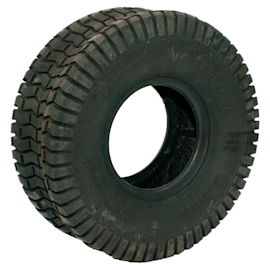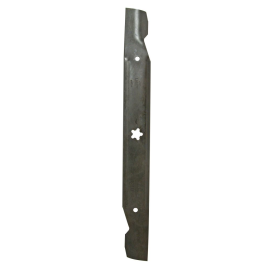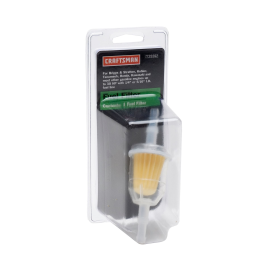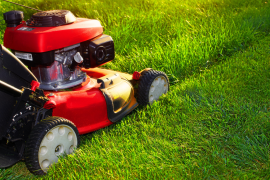Riding lawn mower engine dies when you release the brake video


If your riding lawn mower engine dies when you release the brake, there’s a good chance the mower's seat switch is broken or unplugged. The seat switch stops the engine when it doesn’t detect an operator sitting on the seat to prevent the mower from moving without a driver. This video shows you how to check the seat switch and troubleshoot the problem so you can keep the engine running.
For additional repair help, including common symptoms and troubleshooting tips, step-by-step riding lawn mower and tractor repair guides, and articles, check out our repair help section. In addition, find the riding mower parts you need to fix your mower.
Supplies you need
Wrench set
Slot screwdriver
Hi, this is Wayne from Sears PartsDirect. Today we're going to talk about troubleshooting a riding lawn mower that shuts off when you release the brake.
Most riding lawn mowers have a seat switch that kills the engine if you release the brake when no one is sitting in the seat. This essential safety device ensures the riding mower stops if no one is in control. If the seat switch is broken, it shuts off the engine even when you’re sitting on the seat. Our troubleshooting will focus on that seat switch.
Check the seat switch wire harness connection
Fixing this problem may be as simple as plugging a loose wire harness back into the seat switch. If the harness is unplugged, the engine always shuts off when you release the brake—that way, no one can bypass the seat switch.
So let’s lift the seat and make sure the seat switch wire harness is plugged in securely.
If you can't tell whether the wire harness is fully plugged in, remove the seat from the bracket. Pull out the retaining bolt, press the seat adjustment lever and move the seat fully forward. Use a slot screwdriver to release the locking tab and pull the seat off the bracket. Hold the adjustment lever against the seat bottom as you pull the seat off, so the lever doesn't fall.
Now you can check the wire harness connection to the seat switch and plug the harness back in if it’s loose or disconnected.
Test the seat switch
If the harness is plugged in securely, check the seat switch next. Unplug the wire harness and remove the switch from the seat by rotating it a quarter turn and pulling it out.
If you find visible damage, replace the seat switch.
If the switch looks okay and you’re not sure whether it’s broken, test the switch using a multimeter.
With the multimeter set to measure resistance, touch each inside spade with a meter probe. It should measure near 0 ohms of resistance. Now, press the switch plunger in while holding the probes on those spades. It should measure infinite resistance.
Repeat the process on the outside spades. It should measure near 0 ohms of resistance with the plunger released and infinite resistance with the plunger pushed in.
Replace the seat switch if any of these resistance tests fail.
If the seat switch passes all the resistance checks, then a short in the wire harness could be shutting off the engine when you release the brake. Check the wire harness and repair any damaged wires.
I hope these tips help you fix your riding lawn mower so you can get back to mowing.
Check out our other troubleshooting and repair help videos on the Sears PartsDirect YouTube channel and subscribe if you like them.
Most common symptoms to help you fix your riding mowers & tractors
Choose a symptom to see related riding mower and lawn tractor repairs.
Main causes: punctured tire or inner tube, leaky valve stem, damaged wheel rim…
Main causes: clogged carburetor, damaged flywheel key, dirty spark plug, stale fuel, improper valve lash, engine needs a…
Main causes: worn or broken ground drive belt, bad seat switch, transaxle freewheel control engaged, transaxle failure, …
Main causes: damaged tie rods, bent or worn wheel spindle, worn front axle, damaged sector gear assembly…
Main causes: engine overfilled with oil, leaky head gasket or sump gasket, damaged carburetor seals, cracked fuel pump, …
Main causes: shift lever needs adjustment, neutral control needs adjustment…
Main causes: worn or broken blade belt, broken belt idler pulley, blade clutch cable failure, bad PTO switch, damaged ma…
Main causes: damaged cutting blade, worn deck pulley, damaged mandrel pulley, loose fasteners on mower deck components…
Main causes: faulty battery, bad alternator…
Most common repair guides to help fix your riding mowers & tractors
These step-by-step repair guides will help you safely fix what’s broken on your riding mower or lawn tractor.

How to replace a riding lawn mower rear tire
Your mower can’t run on a damaged rear tire. Here’s how to install a new one.…

How to replace a riding lawn mower blade
If a blade on your mower is dull or bent, replace it following the steps in this repair guide.…

How to replace a riding lawn mower fuel filter
Help your mower run better by replacing the fuel filter during your riding mower's annual tune-up.…
Effective articles & videos to help repair your riding mowers & tractors
Use the advice and tips in these articles and videos to get the most out of your riding mower or lawn tractor.

Learn how a blade removal tool makes replacing the blade easier and safer…

Learn how to use a battery charger if your mower battery is dead.…

You might find the answers to your questions about your riding mower or lawn tractor in this list of frequently asked qu…